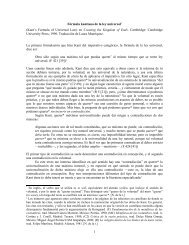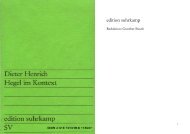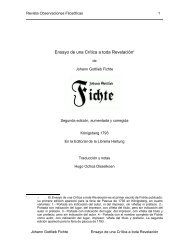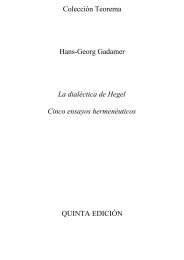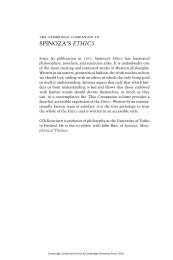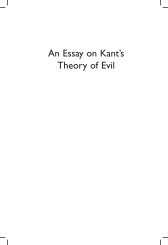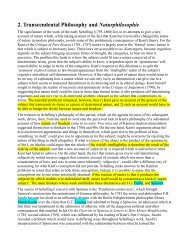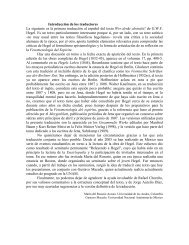- Page 2:
This page intentionally left blank
- Page 6:
CAMBRIDGE TEXTS IN THE HISTORY OF P
- Page 10:
CAMBRIDGE UNIVERSITY PRESS Cambridg
- Page 14:
Contents is then asked whether they
- Page 18:
Introduction Spinoza’s aims The T
- Page 22:
Introduction of society more genera
- Page 26:
Introduction The ‘tr ue me aning
- Page 30:
Introduction occurrences they canno
- Page 34:
Introduction often consciously anta
- Page 38:
Introduction Spinoza claims that Ch
- Page 42:
Introduction to form a tactical and
- Page 46:
Introduction of the Early Enlighten
- Page 50:
Introduction churches in his view a
- Page 54:
Introduction deal were the Dutch an
- Page 58:
Introduction and consequently the m
- Page 62:
Introduction should b e p e r mitte
- Page 66:
Introduction The ¢rst of many publ
- Page 70:
Introduction certainly the historic
- Page 74:
1656 July 27, the twenty-four-year-
- Page 78:
Further reading The best recent acc
- Page 82:
Further reading ‘Hobbes and Spino
- Page 86:
Note on the text and translation Th
- Page 90:
Note on the text and translation Bu
- Page 94:
Note on the text and translation un
- Page 100:
Preface 5 [1] If men were always ab
- Page 104:
Preface been most in£uential with
- Page 108:
Preface servitude, as well as our a
- Page 112:
Preface make a fresh examinati on o
- Page 116:
Preface which is that this lib e r
- Page 120:
chapter 1 15 On prophecy [1] Prophe
- Page 124:
On prophecy [6] Truly, however, wha
- Page 128:
On prophecy express or explain in i
- Page 132:
On prophecy ‘But that is not how
- Page 136:
On prophecy spirit’ hatred and me
- Page 140:
On prophecy Further,‘spirit of Go
- Page 144:
On prophecy men’, ‘men were ¢l
- Page 148:
chapter 2 On the prophe ts [1] It f
- Page 152:
On the prophets and miracles to tes
- Page 156:
On the prophets ignorant of future
- Page 160:
On the prophets all remained obscur
- Page 164:
On the prophets put it this way, th
- Page 168:
On the prophets supreme God, or (to
- Page 172:
On the prophets command of the law.
- Page 176:
On the prophets although the words
- Page 180:
chapter 3 On the vocation of the He
- Page 184:
On the vocation of the Hebrews decr
- Page 188:
On the vocation of the Hebrews For
- Page 192:
On the vocation of the Hebrews Scr
- Page 196:
On the vocation of the Hebrews down
- Page 200:
On the vocation of the Hebrews the
- Page 204:
On the vocation of the Hebrews As f
- Page 208:
chapter 4 On the divine law [1] The
- Page 212:
On the divine law ‘a constant and
- Page 216:
On the divine law [6] If we now con
- Page 220:
On the divine law as a ruling, that
- Page 224:
On the divine law common people and
- Page 228:
On the divine law be sweet to you,
- Page 232:
On ceremonies and narratives people
- Page 236:
On ceremonies and narratives God’
- Page 240:
On ceremonies and narratives they a
- Page 244:
On ceremonies and narratives could
- Page 248:
On ceremonies and narratives [16] L
- Page 252:
On ceremonies and narratives chroni
- Page 256:
chapter 6 81 On miracles [1] Just a
- Page 260:
On miracles is not distinct from Go
- Page 264:
On miracles without risk of doubt.
- Page 268:
On miracles but cannot to be made o
- Page 272:
On miracles This is why the Jews an
- Page 276:
On miracles [15] Yet someone may pe
- Page 280:
On miracles But this is not the sol
- Page 284:
On miracles I could not infer from
- Page 288:
chapter 7 97 On the interpretation
- Page 292:
On the interpretation of Scripture
- Page 296:
On the interpretation of Scripture
- Page 300:
On the interpretation of Scripture
- Page 304:
On the interpretation of Scripture
- Page 308:
On the interpretation of Scripture
- Page 312:
On the interpretation of Scripture
- Page 316:
On the interpretation of Scripture
- Page 320:
On the interpretation of Scripture
- Page 324: On the interpretation of Scripture
- Page 328: On the interpretation of Scripture
- Page 332: Pentateuch, Joshua, Judges, Ruth, S
- Page 336: Pentateuch, Joshua, Judges, Ruth, S
- Page 340: Pentateuch, Joshua, Judges, Ruth, S
- Page 344: Pentateuch, Joshua, Judges, Ruth, S
- Page 348: Pentateuch, Joshua, Judges, Ruth, S
- Page 352: Pentateuch, Joshua, Judges, Ruth, S
- Page 356: Furtherqueries 32.32). 1 It is word
- Page 360: Furtherqueries and that his words h
- Page 364: Furtherqueries It begins,‘Saulwas
- Page 368: Furtherqueries this topic and chall
- Page 372: Furtherqueries appears penned corre
- Page 378: Theological-Political Treatise (2)
- Page 382: chapter 10 Where the remaining book
- Page 386: Theological-Political Treatise They
- Page 390: Theological-Political Treatise medi
- Page 394: Theological-Political Treatise we r
- Page 398: Theological-Political Treatise corr
- Page 402: Theological-Political Treatise b o
- Page 406: Theological-Political Treatise (Epi
- Page 410: Theological-Political Treatise clea
- Page 414: Theological-Political Treatise scop
- Page 418: Theological-Political Treatise impo
- Page 422: Theological-Political Treatise Anyo
- Page 426:
Theological-Political Treatise It i
- Page 430:
Theological-Political Treatise [8]
- Page 434:
Theological-Political Treatise dist
- Page 438:
167 chapter 13 Where it is shown th
- Page 442:
Theological-Political Treatise For
- Page 446:
Theological-Political Treatise that
- Page 450:
173 chapter 14 What faith is, who t
- Page 454:
Theological-Political Treatise peop
- Page 458:
Theological-Political Treatise [9]
- Page 462:
Theological-Political Treatise 179
- Page 466:
chapter 15 Where it is shown that t
- Page 470:
Theological-Political Treatise 182
- Page 474:
Theological-Political Treatise 184
- Page 478:
Theological-Political Treatise cert
- Page 482:
Theological-Political Treatise of t
- Page 486:
Theological-Political Treatise can,
- Page 490:
Theological-Political Treatise They
- Page 494:
Theological-Political Treatise [8]
- Page 498:
Theological-Political Treatise [11]
- Page 502:
Theological-Political Treatise they
- Page 506:
Theological-Political Treatise This
- Page 510:
201 chapter 17 W he re it is show n
- Page 514:
Theological-Political Treatise are
- Page 518:
Theological-Political Treatise deri
- Page 522:
Theological-Political Treatise be a
- Page 526:
Theological-Political Treatise [11]
- Page 530:
Theological-Political Treatise when
- Page 534:
Theological-Political Treatise othe
- Page 538:
Theological-Political Treatise whet
- Page 542:
Theological-Political Treatise left
- Page 546:
Theological-Political Treatise righ
- Page 550:
Theological-Political Treatise they
- Page 554:
chapter 18 Some political principle
- Page 558:
Theological-Political Treatise have
- Page 562:
[6] We see very clearly from this:
- Page 566:
Theological-Political Treatise mona
- Page 570:
chapter 19 Where it is shown that a
- Page 574:
Theological-Political Treatise the
- Page 578:
Theological-Political Treatise con
- Page 582:
Theological-Political Treatise evid
- Page 586:
Theological-Political Treatise anot
- Page 590:
Theological-Political Treatise rati
- Page 594:
239 chapter 20 Where it is shown th
- Page 598:
Theological-Political Treatise [5]
- Page 602:
Theological-Political Treatise read
- Page 606:
Theological-Political Treatise hist
- Page 610:
and the Dutch provincial assemblies
- Page 614:
Annotations: Spinoza’s supplement
- Page 618:
Annotations the ability, while awak
- Page 622:
Annotations [C hapte r 9 ] Annotati
- Page 626:
Annotations therefore include the e
- Page 630:
Annotations A n notatio n 20 (p. 13
- Page 634:
Annotations on, is a r idiculous ¢
- Page 638:
Annotations certainly free to the e
- Page 642:
Annotations 266 Annotation 38:(p.21
- Page 646:
Index Abigail 29 ‘abovenature’,
- Page 650:
Index philosopher xlvi, 37, 110, 11
- Page 654:
Index 247, 249, 251, 252, 253, 255,
- Page 658:
Kant Critique of Practical Reason (




